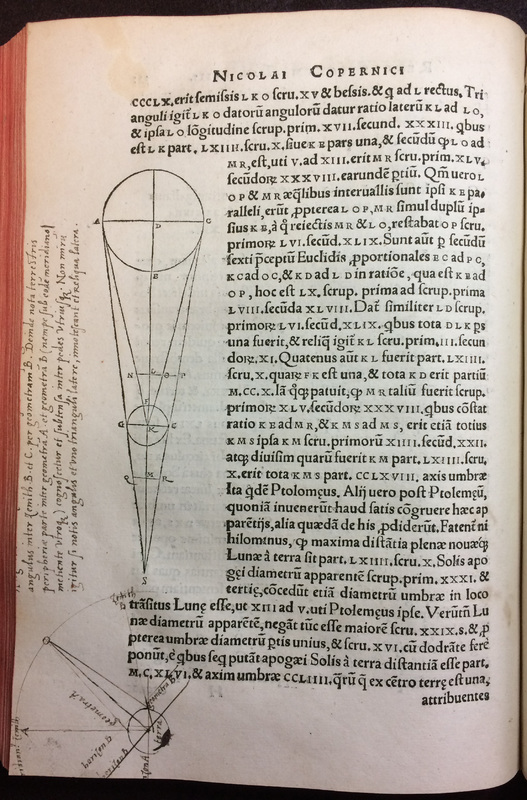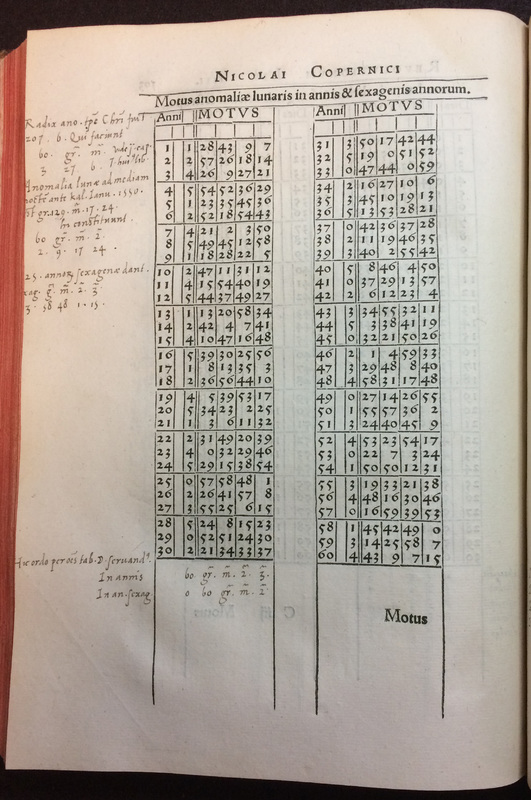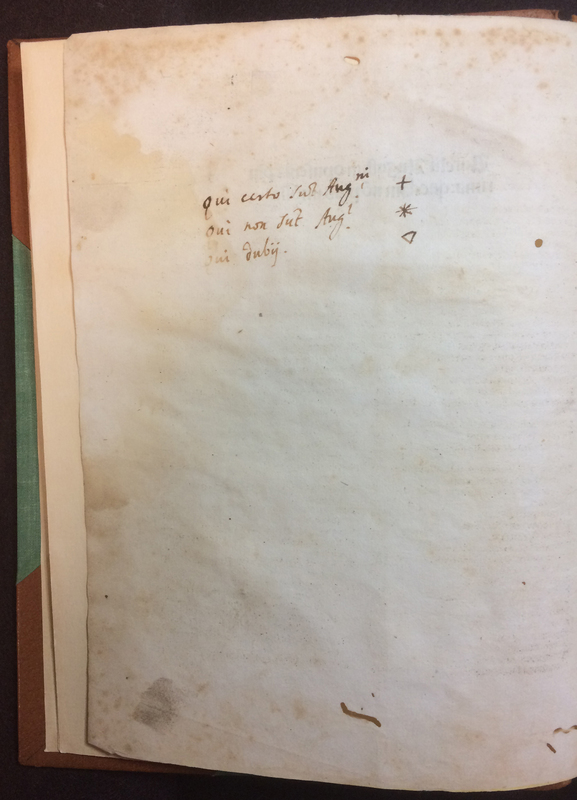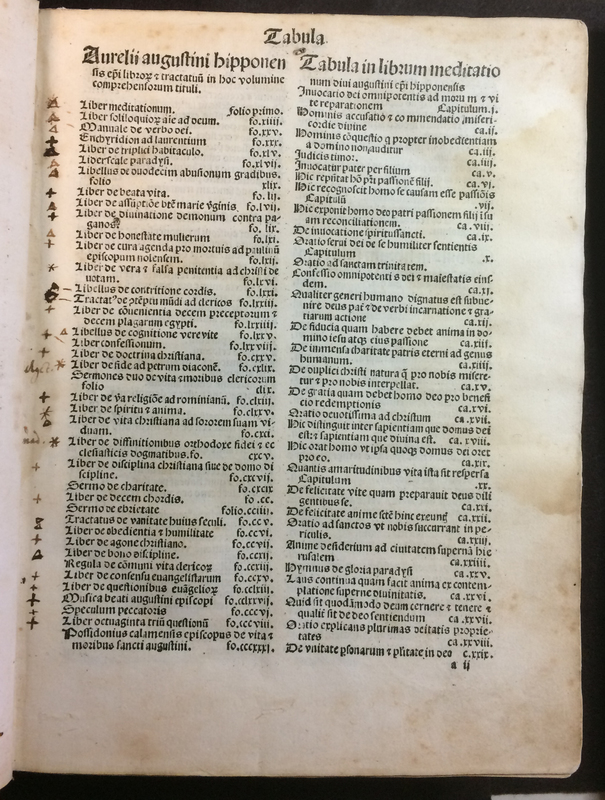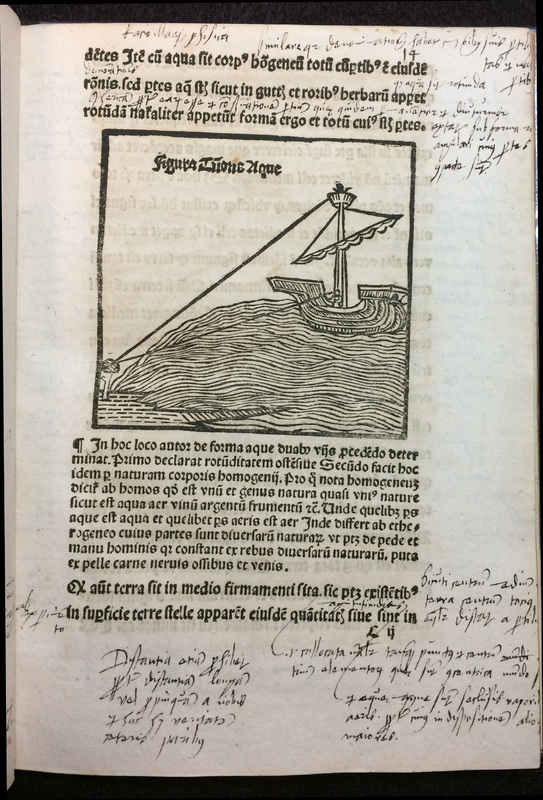Readers on the Margins
In the first page of this early printed edition of Horace's works, an illuminator has added an exquisitely beautiful initial "D" along with other marginal vine-stem decoration to enhance the appearance of the printed text. Unfortunately, it is the wrong letter! A reader, possibly rather distressed, has indicated the error by writing "Me" above this initial. Indeed, the addressee of the first Ode is Mecenas, Horace's friend and patron. In general, during the first decades of the fifteenth century, printers assumed that some sections of their books would be completed by hand, including marks such as rubrication, underlying of the table of contents, foliation, marginal index-letters, and decorated, or even historiated, initials. While printers could often provide these features in the printing shop, they also invited readers to make their own arrangements for the addition of these elements.
By examining all the extant copies of the first (1543) and second (1556) editions of Copernicus' De revolutionibus orbium coelestium, Owen Gingerich proved that this text was widely read shortly after its publication: many of these copies contain reader's annotations, mostly by the scientific community. For instance, our copy belongs to a group of nine copies of the first edition containing notes by students of Jofrancus Offusius, a Rhenish astronomer working in Paris in the 1550s. More precisely, our copy is one of a smaller group of seven that includes planetary radices for the year 1550 at the bottom of the mean motion tables. Some of the notes are very comprehensive, such as the one written on the top of folio 129r, a long commentary on the lunar parallax, that is, the apparent position of the moon as viewed from two different locations, or from the same place six hours apart.
Throughout the fifteenth and sixteenth centuries, humanist readers regularly annotated their books on the margins and within the printed text itself. These notes could be brief and merely utilitarian to make the books easily browsable. For instance, important passages were highlighted by underlining or by drawing a little hand with the index extended (manicula); indices and tables of contents could be also added by hand. And sometimes an educated reader might even challenge the reliability of a table of contents by warning other readers about the real authorship of the works listed by the publisher. For example, on the verso of the first leaf of the book displayed below, a reader used a system of symbols to identify which works could be identified as authored by St. Augustine with certainty, qui certo sunt Aug(usti)ni); as not being by him qui non sunt Aug(ustin)i; and as dubious, qui dubii.
Readers also recorded their reactions to the text by including corrections, comments, and even lengthy interpretations. They often added annotations to a book that had been already scholarly edited and commented by eminent scholars. Thus, by adding this new layer of learned commentaries, readers virtually participated in contemporary intellectual debates. Moreover, a heavily annotated book could also become a useful instrument in the context of the university lecture room: The professor could read to the students the main text along with his own notes.
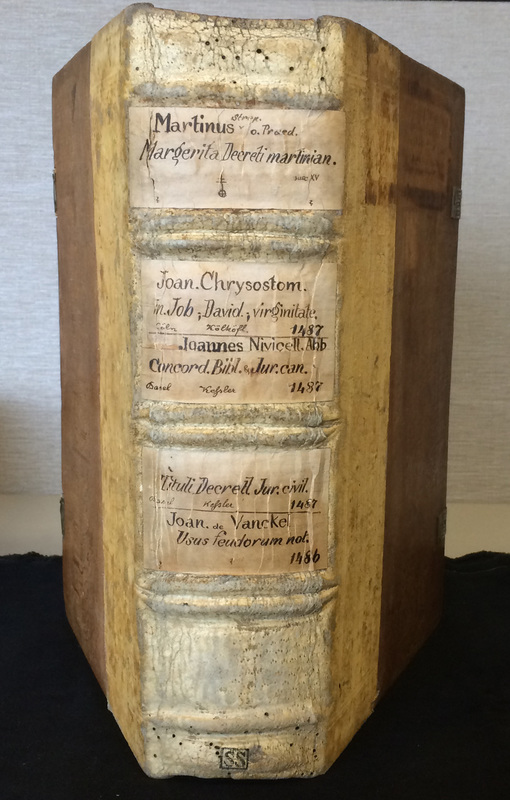
On the Footsteps of Owners: From Monastery to Monastery
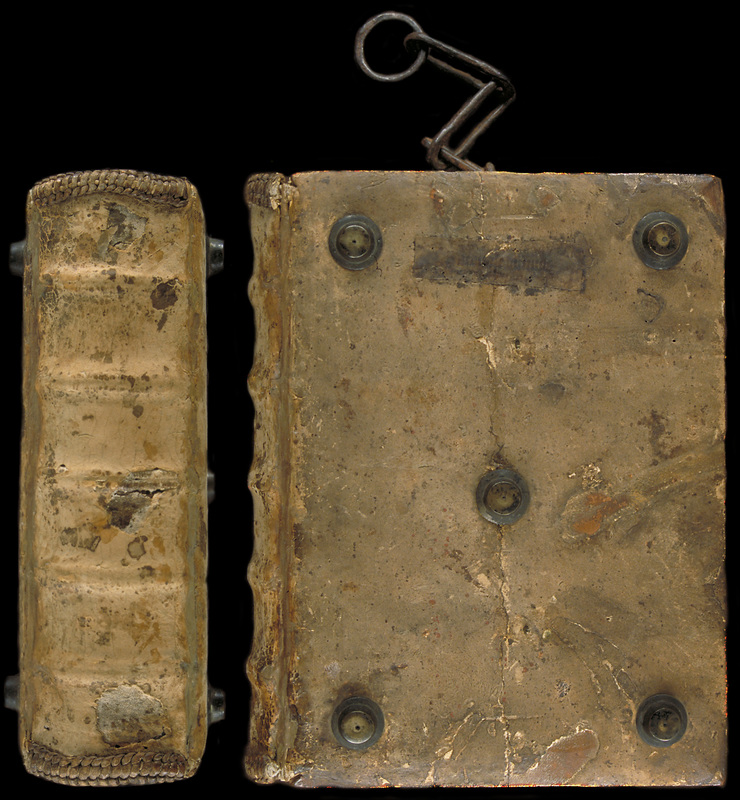
Bring Out Your Bindings!


